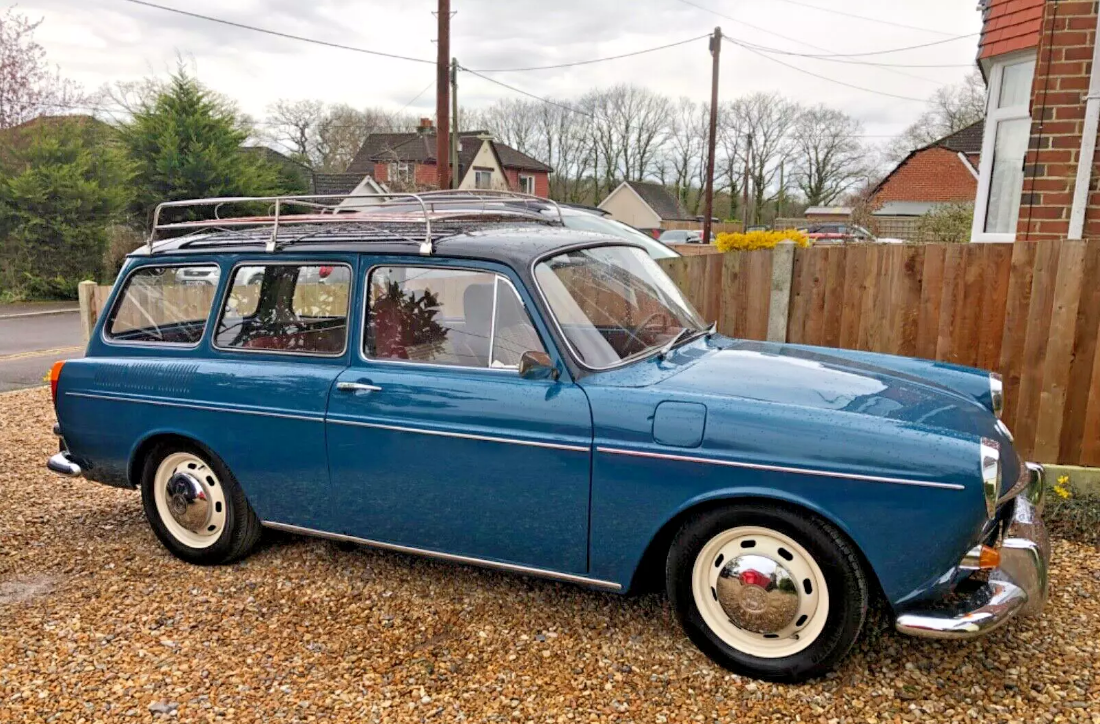THE ESTATE CAR WITH TWO BOOTS – A 1969 VOLKSWAGEN TYPE 3 VARIANT
18 June 2024
Car customisation is inevitably a very personal matter. That said, it is intriguing to encounter a 1969 Volkswagen 1600 Type 3 Variant that has not been lowered, given alloy wheels or turned into the grooviest surf wagon in the history of Swindon.

By the late 1950s, the need for a larger Volkswagen to appeal to buyers in the Ford Taunus/Opel Rekord category was increasingly apparent. The post-war ‘Wirtschaftswunder’ German economic boom resulted in a demand for more opulent cars. So, in 1958 VW commissioned Porsche to devise prototypes with engines that fitted in an insulated compartment.
Volkswagen’s management finalised the design in 1959, but the secrecy of the project was such that even at the 1960 Geneva Motor Show, they denied they were creating a new model. When the 1500 Type 3 debuted at the 1961 Frankfurt Motor Show, a Telegraph report was headlined “Volkswagen Shock For British Car-Makers – Model For The Better Off”. It went on to describe British exhibitors at the show as receiving “a severe jolt” from the latest VW.
And many visitors were amazed - not just by the first new Volkswagen saloon since 1938 but also by the “two boots”. The 1500’s rear-mounted, air-cooled, horizontally opposed 1,493cc four-cylinder unit had modified carburettor, fan, and ancillary mountings that meant there was room for a second luggage compartment above it. Meanwhile, Bill Boddy of Motor Sport believed “The finish of a VW is on a par with the best there is”.
The Variant made its bow in February 1962 and in August 1965, the Type 3 gained 1.6-litre power, front disc brakes. That month also saw the launch of the 1600TL ‘Fastback’ which replaced the early ‘Notchback’ saloon in the UK, although VW continued to build the earlier model.
August 1966 saw the Type 3 fitted with a 12-volt electrical system. By the end of 1967, the 1600E ‘E’ (Einspritzung) was the first German mass-produced car with electronic fuel injection. Jerry’s Variant has the standard twin-carburettor unit and hails from the USA - “I am still trying to find out its history”. It is easy to imagine its original owner revelling in the two luggage compartments and how their new Volkswagen was the antithesis of a Detroit’ muscle car’.
From a UK perspective, a 1969 Type 3 Variant would have appealed to a former Beetle owner who needed more room or a motorist who regarded the Ford Cortina or Hillman ‘Arrow’ Estates as too conventional. By then, Volkswagen’s reputation for quality was long established with British motorists (imports of the Beetle commenced in 1953), and a 1600 Variant would have been ideal for a moderately go-ahead art school lecturer.
Type 3 sales ended in 1973 with the launch of the front-wheel-drive Passat. For those of us of a certain vintage, seeing Jerry’s VW is an intensely nostalgic experience, from the instruments to the heater outlets that roasted the shins of rear seat passengers. The brochure even claimed, “It’s got a flow separation line like a racing car” although any comparison with a Formula One Lotus is purely fanciful. Instead, the Type 3 lived up to Volkswagen’s claims of “a solid, fundamentally honest vehicle, capable of serving its owner who appreciates such characteristics”.
Plus, if the Type 3 Fastback impressed Dustin Hoffman, think how he might have reacted to a Variant -
With Thanks To: Jerry Kenton - eBay
